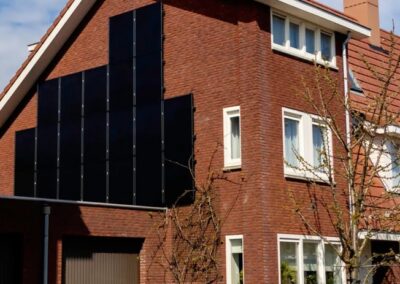Solar Vehicle Charger, Vaughan
For homeowners looking for sustainable ways to fuel their vehicles and reduce their overall carbon footprint, having a solar vehicle charger installed not only reduces your environmental impact, but makes economic sense.
Request InformationSchedule Service
Solar Vehicle Charger, Vaughan
Some of the main reasons that homeowners make the switch to an electric vehicle is for the purposes of sustainability and convenience. However, within a few months of owning and charging an electric vehicle, homeowners are likely to see a significant increase in their electric bill. To bypass this increase, it’s common for homeowners to invest in a solar vehicle charger. As governments everywhere look to phase out the sale and use of gasoline vehicles, it’s never been a better time to invest in an electric vehicle and a charger powered by clean and sustainable solar energy.
The amount of solar panels required to charge a vehicle can vary depending on the type of electric vehicle owned, how much a homeowner drives, and the battery system that is incorporated into the solar panel system. In regards to a solar vehicle charger, different electric vehicles have different specifications that consume energy at varying rates, making the amount of power required varied depending on the model and make. Another determining factor is how much a homeowner drives on a daily basis.
For example, the longer a daily commute is, the larger a solar panel installation will generally be. For those living in more remote areas, having to commute to longer distances means that more power (and therefore more solar panels) will be required.
The two most important pieces of equipment within a solar panel system are batteries and inverters. It’s important when installing a solar panel system to ensure that you have a good battery storage capacity, as the energy generated and produced must also be stored somewhere. This allows your solar vehicle charger to work even when charging overnight or on cloudy days.
Inverters are pieces of equipment that convert energy to allow the power generated by solar panels to be feasibly used by the electrical grid. This can take the form of microinverters or string inverters, each with their own benefits and drawbacks.
Contact MADE ELECTRIC for more information on solar vehicle chargers! We operate within the GTA and Vaughan, and would be happy to help you through the process of transitioning to solar power. Whether you’re looking to have solar panels installed for your home, need help in picking out the perfect solar vehicle charger, or have questions about connecting your solar panels to your current charging station, we are here to answer your call.
Frequently Asked Questions (FAQs)
How long will my solar vehicle charger last for?
Solar panels themselves have an average lifespan of 25-30 years, meaning that you will be able to comfortably charge your electric vehicle for several decades using (and saving money with) solar power before ever having to worry about replacements. For the EV charger itself, this depends on the frequency of use, but it should last at least 5 years with daily use before any wear, tear, or damage. In general, it’s recommended to have maintenance performed on your home every few years to ensure that everything is working as it should.
How much do solar vehicle chargers save homeowners?
On average, savings can be upwards of $10,000 over 20 years, even deducting expenses such as the cost of installation and equipment. This is money that would otherwise be spent on your electric bill, reducing the average annual gas and electric utility bill from over $3,500 to less than $350. For many homeowners, a cost reduction of 10% or more is worth the investment.
What is the difference between string inverters and microinverters?
String inverters in a solar panel array are when solar panels are arranged in a string formation, feeding the power produced into one singular inverter. This arrangement is relatively more affordable up front, but for additions and maintenance, it is considered more complicated and costly. An inverter in a string formation also has a maximum capacity. Microinverters are when each individual solar panel has its own inverter. Customization and adding additional panels are much easier with microinverters, but microinverters are generally more expensive initially.




